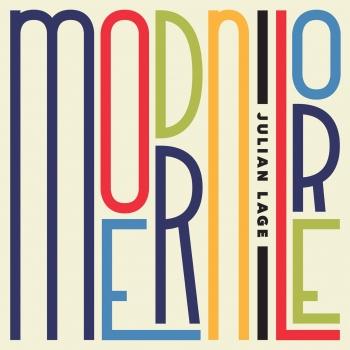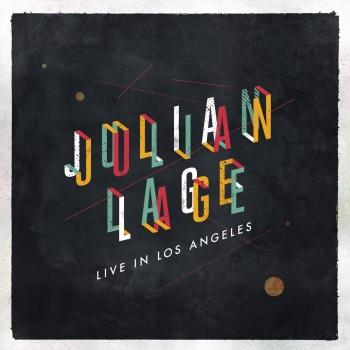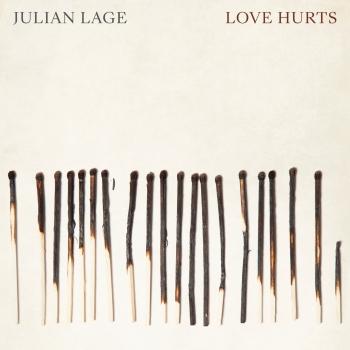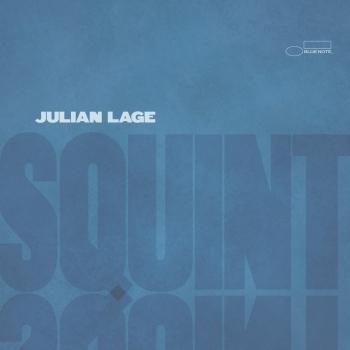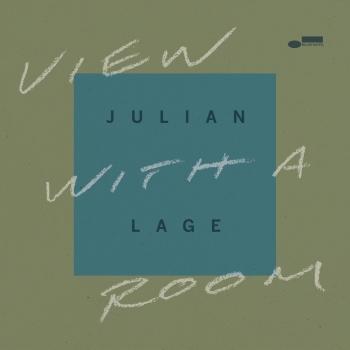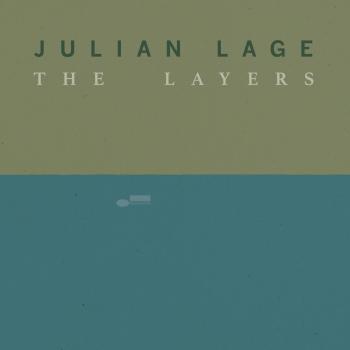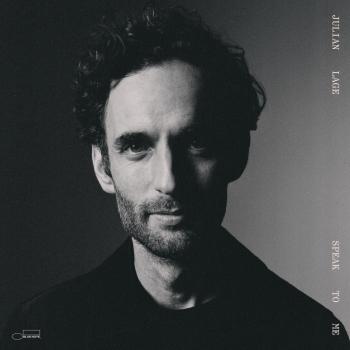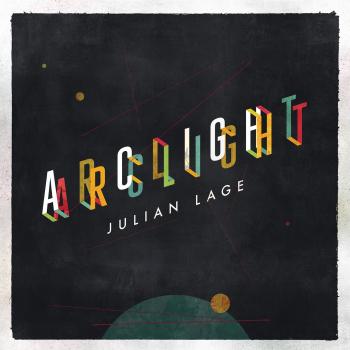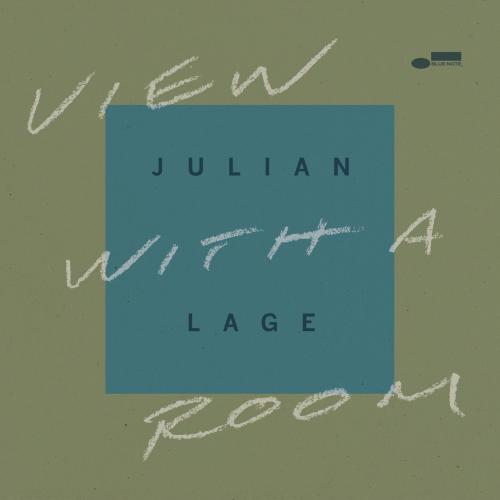
View With A Room Julian Lage
Album Info
Album Veröffentlichung:
2022
HRA-Veröffentlichung:
16.09.2022
Das Album enthält Albumcover
Entschuldigen Sie bitte!
Sehr geehrter HIGHRESAUDIO Besucher,
leider kann das Album zurzeit aufgrund von Länder- und Lizenzbeschränkungen nicht gekauft werden oder uns liegt der offizielle Veröffentlichungstermin für Ihr Land noch nicht vor. Wir aktualisieren unsere Veröffentlichungstermine ein- bis zweimal die Woche. Bitte schauen Sie ab und zu mal wieder rein.
Wir empfehlen Ihnen das Album auf Ihre Merkliste zu setzen.
Wir bedanken uns für Ihr Verständnis und Ihre Geduld.
Ihr, HIGHRESAUDIO
- 1 Tributary 05:47
- 2 Word For Word 03:15
- 3 Auditorium 04:28
- 4 Heart Is A Drum 03:31
- 5 Echo 04:52
- 6 Chavez 04:19
- 7 Temple Steps 03:58
- 8 Castle Park 03:57
- 9 Let Every Room Sing 05:10
- 10 Fairbanks 03:55
Info zu View With A Room
Gipfeltreffen der beiden Spitzen-Gitarristen Julian Lage und Bill Frisell! Der Gitarrenvirtuose Julian Lage erweitert seinen Horizont auf View With A Room, einer Sammlung von 10 fesselnden Eigenkompositionen, die am 16. September erscheint und seine zweite Veröffentlichung für Blue Note Records darstellt. Nachdem er sich mit seinem brillanten und eingespielten Trio, bestehend aus dem Bassisten Jorge Roeder und dem Schlagzeuger Dave King - zuletzt zu hören auf dem gefeierten Blue Note Debüt Squint aus dem Jahr 2021 - eine Basis geschaffen hat, richtet Lage seinen Blick nach außen und entdeckt neue orchestrale Möglichkeiten mit der Hinzunahme der Sechssaiten-Ikone Bill Frisell, der seine unnachahmliche Stimme zu diesem beeindruckenden Album beisteuert.
"In vielerlei Hinsicht wollte ich diese Platte schon seit Jahren machen", sagt Lage. "Es entspringt einer musikalischen Fragestellung: Kann man eine üppige Orchestrierung mit einem organischen Sinn für Improvisation und der Agilität eines kleinen Ensembles kombinieren?"
Ohne die Besetzung mit zusätzlichen Instrumenten und komplizierteren Texten aufzustocken und damit die Beweglichkeit und die gewagte Spontaneität zu verlieren, die er mit Roeder und King in den letzten Jahren verfeinert hat, fand Lage seine Lösung dort, wo er sie so oft findet: in der Gitarre.
"Die Antwort kam von einigen der historischen Referenzen, die mir an der E-Gitarre wichtig sind", erklärt Lage. "Es gibt eine gewisse Abstammung von den frühen Pionieren wie Jimmy Bryant, George Barnes und Charlie Christian, deren Sound eine fast elektrische Volatilität aufweist. Er ist sowohl schön als auch irgendwie scharf; er ist gedämpft und warm, aber auch irgendwie düster. Als ich über die Orchestrierung für dieses Album nachdachte, wollte ich die Spitze dieses Pfeils fördern."
Es gibt niemanden, der besser versteht, wonach Lage suchte, der sich in der Geschichte der Gitarre und des Jazz und darüber hinaus, in seinen Persönlichkeiten und Möglichkeiten, besser auskennt als Bill Frisell. Der legendäre Gitarrist hat mit Lage in verschiedenen Kontexten zusammengearbeitet, unter anderem bei Duo-Konzerten und Projekten von John Zorn, und bereichert Lages Vision auf atmosphärische und prägnante Weise in View With A Room. Die beiden Gitarristen haben sich auf ein kurzes Vokabular verständigt, das so unterschiedliche Referenzen wie die Beach Boys, Keith Jarretts American und European Quartets und George Harrisons All Things Must Pass enthält. Die subtile Verflechtung der beiden Gitarristen ist das Herzstück von "Auditorium", wo Frisells agile Rhythmusarbeit die wortgewandten Leads von Lage auf dem anmutig subtilen Vorwärtsdrang von Roeder und King stützt.
"Es gibt niemanden, dem ich mehr vertrauen würde als Bill Frisell, der sich in unser Trio-Ökosystem einbringt und in der Lage ist, es zu erweitern, während er es völlig umarmt", sagt Lage. "Es wurde eine wunderbare Zusammenarbeit, die die Technicolor-Erfahrung erreichte, nach der ich gesucht habe."
View With A Room wurde von Margaret Glaspy produziert, seiner Frau und musikalischen Partnerin, die ihre eigenen Erkenntnisse als Singer-Songwriterin in die lyrischen und erzählerischen Aspekte einbringt, die Lages Kompositionen so einzigartig machen. Sie arbeitete in den Bridge Studios in Brooklyn eng mit dem Tontechniker Mark Goodell zusammen, dem Lage die Aufgabe zuschreibt, "dieses Album an einen klanglichen Ort zu bringen, der auf das verweist, was wir an den klassischen Blue-Note-Platten am meisten lieben, und sich dennoch absolut zeitgemäß und einzigartig für den Sound dieser Band anfühlt". Lages langjähriger Freund und Mitarbeiter Armand Hirsch fügte integrale Postproduktions-Elemente hinzu, die die emotionale Absicht jedes Songs in den Mittelpunkt stellen.
Julian Lage, Gitarre
Bill Frisell, Gitarre
Dave King, Schlagzeug
Jorge Roeder, Bass
Produced by Margaret Glaspy and Armand Hirsch
Julian Lage
The New York Times calls Julian “…one of jazz’s breezier virtuosos, possessed of an unflappable technical facility and a seemingly boundless curiosity.” At age 27, Julian Lage already boasts a resume that an artist twice his age would be proud to claim. A former child prodigy—he was the subject of the 1997 documentary Jules at Eight—the California- born, now New York–based guitarist has collaborated with such giants as Gary Burton, Jim Hall, David Grisman, Béla Fleck, and Charles Lloyd. He’s released three albums as a leader, most recently 2016’s trio outing Arclight featuring Scott Colley and Kenny Wollesen. UK’s Jazzwise describes Arclight as '... a bright light shone on very specific, finely wrought musical miniatures that unfold untold pleasures.'
Arclight, Julian Lage’s Mack Avenue debut, marks his first recorded outing on electric guitar and in a trio format, backed by double bassist Scott Colley and drummer Kenny Wollesen. Like that titular intense white light, Lage is a performer who burns brightly: The pace he sets is brisk, the mood often upbeat, the playing so quick-witted and offhandedly dazzling that one is compelled to immediately press “repeat,” especially when tracks like “Persian Rug” and “Activate” whiz by in under two and a half minutes. For a thoughtful artist like Lage, who will research and ruminate on a project long before he sets foot in a studio, this was a liberating experience, plugging in and playing with a kind of abandon. He was encouraged along the way by his producer and friend, the eclectic singer-songwriter Jesse Harris, who helped maintain an air of spontaneity and discovery throughout the trio’s three-day stint at Brooklyn Recording.
Lage has long been heralded for his virtuosic ability as an acoustic guitarist. In fact, he was well known in musician circles as a guitar prodigy, whose early genius was captured in a 1997 Oscar-nominated documentary short, Jules At 8. As an adult, he’s fulfilled the promise of his extraordinary youthful talent. The New Yorker’s Alec Wilkinson declared, “He is in the highest category of improvising musicians, those who can enact thoughts and impulses as they receive them.” Nate Chinen of the New York Times called Lage “one of jazz’s breezier virtuosos, possessed of an unflappable technical facility and a seemingly boundless curiosity.” After independently releasing a solo acoustic set of largely original material called World’s Fair in 2014, that curiosity prompted Lage to reconsider the electric guitar, specifically a Fender Telecaster – “the most refined embodiment of the modern guitar,” as he puts it.
“The Telecaster has been around for more than 60 years,” says Lage, “and it’s still so present. I took that as a parameter: Arclight focuses on my love of the electric guitar, specifically the Telecaster. And even more specifically, it’s centered on a jazz trio. It’s basically a realization of this recessive obsession I’ve had for a long time, but had never followed. I wanted to do songs that I feel maybe fell through the cracks for me when I was growing up, but now feel like a brand new kind of music.”
Though up to now Lage has largely recorded and performed original material, he wanted to explore his interpretive skills on Arclight, concentrating on music from the early to mid-20th century, “jazz before be-bop.” This was a period that had also inspired his composing for World’s Fair. As he did then, Lage consulted Brooklyn-based guitarist, banjo player and music scholar Matt Munestiri, who had already pored over the more obscure pages of the American Songbook. Explains Lage, “I had this conundrum. I was looking for minor songs and slightly more melancholy music from the twenties. Matt sent me about 20 songs that ranged from Willard Robison to Sidney Bechet to Jack Teagarden, Bix Biederbecke and Spike Hughes, a British band leader who had a recording of a song called ‘Nocturne’ that ended up on our record. He nailed this melancholy zone of jazz that I felt was kind of forgotten. It was really poignant, melodic music that had a quirk to it. I think of it as the pre-be-bop generation, when country music and jazz and swing were in this weird wild-west period. “
Along with ‘Nocturne,’ Lage tackled W.C. Handy’s “Harlem Blues,” a Gus Kahn-Neil Moret piano roll number called “Persian Rug,” and “I’ll Be Seeing You,” which starts off tenderly but gives way to a lively improvisational mid-section before finding its way back to the gentle, classic melody. The rest of the album consists of originals, which, notes Lage, “celebrate the other period I’m obsessed with, the Keth Jarrett American quartet period, an improvisational jazz era that had such a rich connection to songs and to folk music. This was the concept for the album.”
Playing a Telecaster is also an affectionate nod to Lage’s childhood: When he was four years old, his dad, a visual artist, had made him a plywood guitar, based on a Fender Esquire he’d traced from a Bruce Springsteen poster. Lage “played” that guitar until his dad bought him a real electric guitar a year later and they started practicing blues progressions and improvisation together. Similarly, Lage’s all-star rhythm section on Arclight recalls the sounds, the bands and the gigs that inspired him as a young musician. Lage remembers seeing Colley and Wollesen at famed Bay Area jazz club Yoshi’s, backing his hero, the late guitar icon Jim Hall, as well as his early mentor, Gary Burton: “I would go to these shows, sit up front, put my head on the stage and watch. They were the most formative jazz guitar experiences of my life. And they were with these guys. I didn’t specifically intend to reassemble that dream crew but then I thought I had a chance, why not call them? I love them, I know their sounds; they would get my vision. And that’s what tied everything together. This was not only a band where I could get to play all this stuff that I’ve come up with, this is band of people I love listening to. And that was so refreshing coming from the solo guitar thing, which was a very personal quest to build a solid individual foundation of music on the guitar. “
Jesse Harris became both observer and arbiter as the sessions unfolded, an invaluable role. While Lage would perceive a take as merely the first in a series, Harris, as Lage recounts, would say: “’That’s it! Do you hear the spirit, the narrative, the build? Do you see how you struggle there but nail it here? That’s the ebb and flow.’ I absolutely loved it. This was very different than the solo guitar record, where I felt as though only I knew when it was done. I was outnumbered on this one, and by all my favorite people and musicians. Arclight also has a spirit to it, this raucous energy, a thing that I felt was so strongly connected to this music and this band. There was a concept, a philosophy, a tonal palette, but that kind of energy, that almost dance-band vibe – Jesse could see it a mile away. It was so much fun to turn it up loud in the studio, and feel the music that way.”
Concludes Lage, “I feel like I’ve been on this very focused mission to make certain things a part of my musical life, and the electric guitar was one of the things that was missing. I’m very excited to share this. “
Dieses Album enthält kein Booklet







